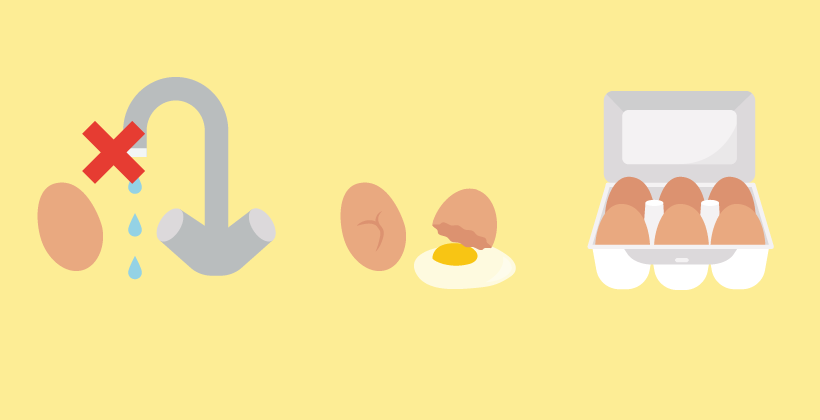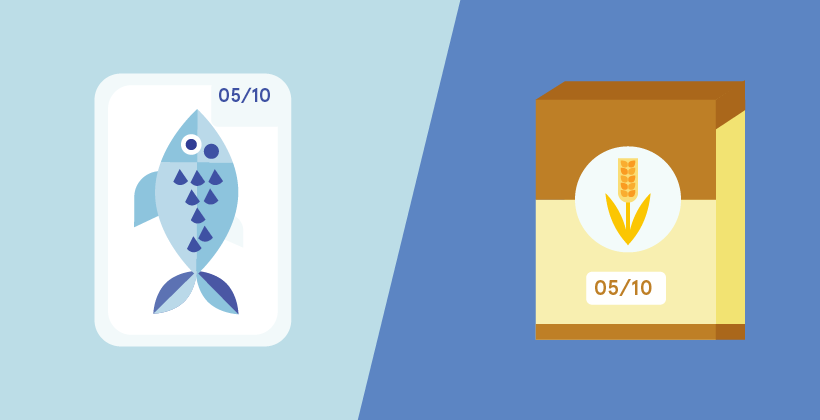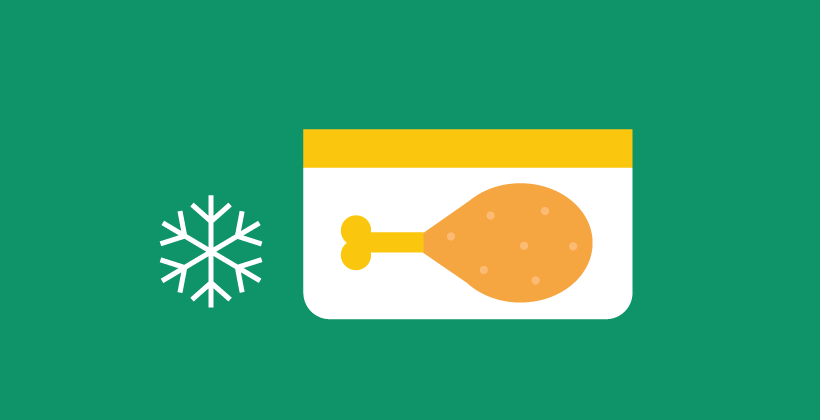Safe food storage at home
Last Updated : 31 March 2017Keeping our food fresh for longer helps us to avoid getting sick, benefits the environment, and saves us money. But where and for how long can we store different types of food? What needs to be chilled and what not? Most pre-packed food labels provide storage instructions, but what is best to do after opening? The storage tips below can help us prevent food spoilage and reduce food waste.
Learn to understand dates
Do you know the difference between ‘use-by’ and ‘best before’ dates? These terms are defined by the European regulation on provision of food information to consumers:1,2
- ‘Best before’ date is about quality. After this date, it’s normally safe to eat, but the taste, texture, or smell, might not be at its best. ‘Best before’ dates often appear on foods that are canned, dried, frozen, and on fresh fruit and vegetables.
- ‘Use by’ date is about safety. After this date, it may make you sick. Do not eat food after its use-by date even if it smells or tastes fine. ‘Use by’ appears on perishable foods (foods that are likely to spoil or go-off quickly), such as chilled dairy products, meats, and prepared salads.
(!) Dates are only valid when storage instructions on the label are followed. Make sure to read the food labels and follow the manufacturer’s instructions (such as ‘once open, keep refrigerated and use within 3 days’).
When stocking food, place recently bought items with a later date behind those which need to be used sooner. This method will help us consume foods before their use-by or best before dates and help reduce food waste.3,4
Cupboard storage
Not all foods need to be refrigerated to be safely stored. Clean, dry and cool (below 25°C) shelves are the best place to store bread, dry food (in sealed bags or containers), unopened tins, jars and drinks.
Some produce, particularly those from the tropics, such as bananas, are sensitive to cold, and should not be stored in the refrigerator. Potatoes and onions are best stored outside the refrigerator in a dark place to avoid sprouting. Produce that needs ripening, such as tomatoes, avocados, stone fruit and pears can be ripened by storing at room temperature, away from direct sunlight.5
Make sure not to place food directly on the floor to avoid attracting insects and rodents, and use a different cupboard for cleaning products and household chemicals to prevent any accident.6
Keeping food refrigerated
Foods labelled with ‘keep refrigerated’ and most foods with a ‘use by’ date, such as pasteurised milk, meat, ready meals, etc., should be kept in the fridge so they stay safe until the use by date given on the label. The cool temperature (below
Some items, otherwise kept at room temperature, such as UHT milk and cartons of liquid soup, must be refrigerated after opening. It’s best to not store opened tins in the fridge, as this may give the food a metallic taste - transfer their contents into storage containers and cover.7
Refrigerating tips:7,8
- Keep the fridge below 5°C and check regularly using a refrigerator thermometer.
- Avoid packing too much in your fridge. Allow space between items, so that air can circulate and the refrigerator can function efficiently.
- Avoid placing hot foods straight into the fridge as this will raise the temperature of the fridge. Wait till they cool down to room temperature.
- Store raw meat, fish and poultry in sealed containers, on the bottom shelf of your fridge. These raw foods can contain microbes that can cause illness. These microbes are killed during cooking, so it’s important to keep cooked and ready-to-eat foods separated from raw foods, to stop microbes spreading.
- Microbes can still grow at low temperatures, although more slowly. So, it is best to wipe up spills immediately, clean the fridge frequently, and store foods wrapped or in covered containers.
- Remember the ‘2-hour rule’: whether it is leftover, take-away, or just-bought, it is important to cool and place foods in the fridge within 2 hours.
- Eat leftovers within 2-3 days (1 day for rice dishes, this is because rice can contain spores that can survive cooking and these spores can grow into bacteria. The longer cooked rice is kept, the more likely it is that the bacteria will make it unsafe to eat).
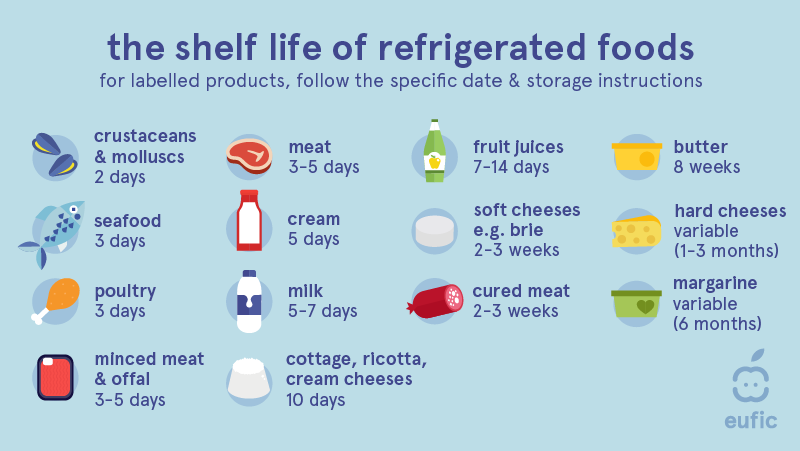
Figure 1. Guidance on shelf life of some chilled food, in the coldest part of a refrigerator.5
You can freeze just about all foods before its 'use by' date and keep it safe for years. However, the quality will decrease after 3-12 months depending on the product, so always check the label instructions.
Freeze safely to extend shelf life
Freezing tips:8,9
- Keep the freezer at or below -18°C, check with a thermometer.
- Use appropriate packaging (sealed freezer bags and plastic containers) to help protect foods and prevent ‘freezer burn’.
- Thaw frozen food completely before cooking, ideally in a container in the fridge overnight. Once cooked, it can be stored in the fridge for 2-3 days.
- Do not refreeze thawed food. Food that has been defrosted should never be refrozen unless it is cooked prior to refreezing.
- Avoid placing hot foods straight into the freezer, as this will raise the temperature in the freezer.
- Food can also be defrosted in the microwave. However, microwaves can heat unevenly, and leave ‘cold’ and ‘warm’ spots where microbes can survive. Therefore, once fully defrosted in the microwave, it’s best to cook and eat the food straight away.10
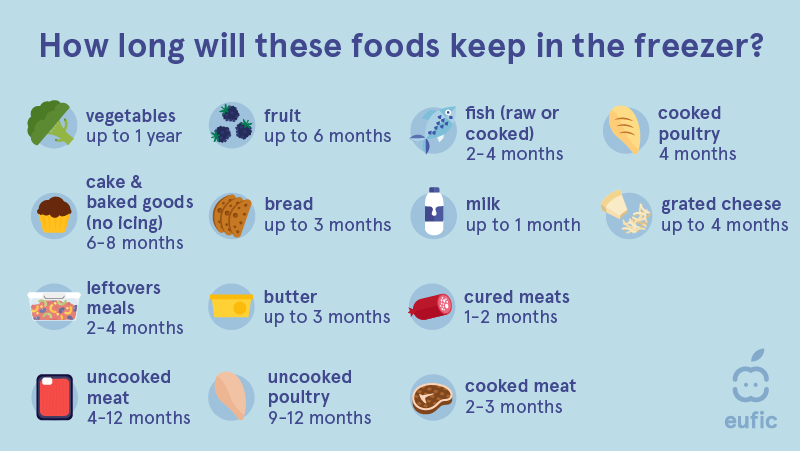
Figure 2. Guidance on how long foods will stay at their best quality in the freezer.11
What to do if the freezer stops working?
In case the freezer stops working (due to, for instance, a power cut), it is best to leave the food inside and keep the door shut. If the failure is repaired within 24 hours, foods will most likely remain frozen and safe.9 Still, check items individually, as food that has begun to defrost (starting to get soft and/or with liquid coming out) should be immediately used.3
References
- EUFIC (2013). Food shelf life and its importance for consumers.
- Regulation (EU) No 1169/2011 of the European Parliament and of the Council of 25 October 2011 on the provision of food information to consumers.
- Food Standards Agency (2015). Safe catering – your guide to making food safely. Belfast, Northern Ireland: FSA.
- FAO (2015). Food waste & loss – the blind spot in the fight against hunger.
- CSIRO (2015). Refrigerated storage of perishable foods.
- Mortimore S & Wallace C (2013). HACCP: A Practical Approach. 3rd edition. Springer US.
- Food Safety Authority of Ireland (2016). Home cooking and storage.
- Safefood (2004). Issuing temperature guidance to consumers on the cooking and storage of food. Cork, Ireland: Safefood.
- Safefood (2017). Freezer FAQs.
- World Health Organization (2006). Five keys to safer food manual.
- Safefood 2021. Storing food in the freezer.
